The history of garters, the most exciting accessory of the ladies' wardrobe
Women's garters over the centuries gradually turned into a fetish, a symbol of victory in love. Fashion historian Mariana Skuratovskaya opens the veil of time over this piquant wardrobe item, which in different centuries was both a symbol of loyalty, and an instrument of seduction, and even a way to express her political beliefs.
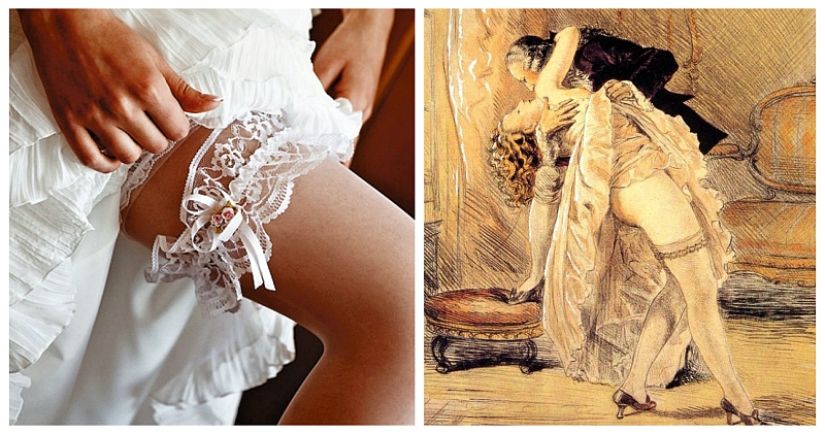
To feel especially elegant, it is enough to wear stockings under the most casual suit; the advice is old, but tried. However, why old? After all, tights have entered our lives not so long ago — what is some half a century compared to the history of ours and our costume? And before there was no choice — stockings, a variety of stockings ... and garters. By the way, they pay insulting little attention to the latter and, if they delve into the history of underwear, they usually write about the stockings themselves, only casually mentioning what supported them.
But garters have their own and, let's note, a glorious history. If you don't pay attention to them, they may get offended and leave you at the most inopportune moment. And then - embarrassment! However, in very rare cases, such a situation can turn out unexpectedly…
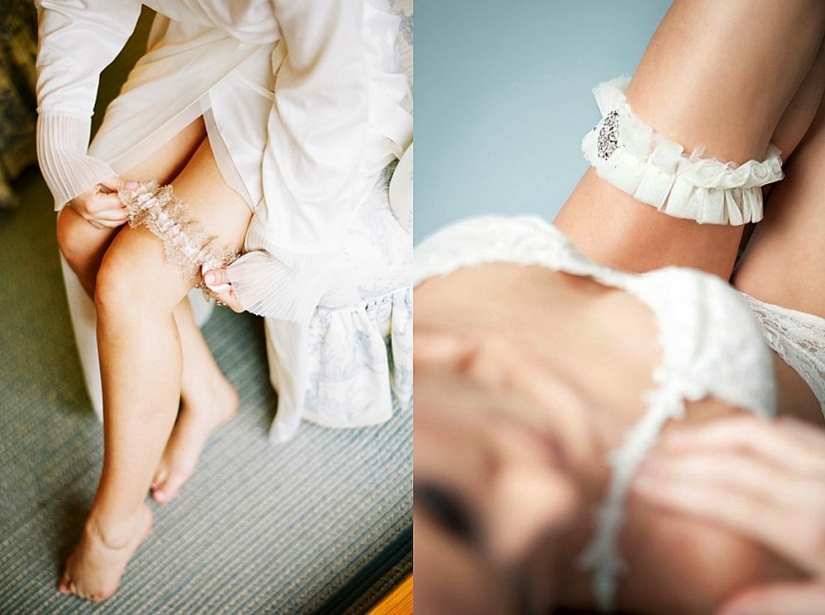
A long time ago, an English countess was dancing at a party, and a garter for a stocking flew off her leg. Noticing how some of the guests were laughing, the king himself raised the garter and said: "Let the one who thinks badly about it be ashamed." And then he added that soon he would raise the garter to such heights that everyone would be honored to wear it themselves. The king kept his word and founded the Order of the Garter — the highest knightly order of Britain.
There are other versions of the legend - they say that one day the queen was returning from the king's chambers to her own, and when he went to her, he saw a blue garter lying on the floor. The servant passed by and did not bend down to pick it up. Then the king, who decided that it was his wife's thing, ordered the garter to be brought immediately and announced that, despite such neglect, the time would come when everyone would honor it. And the famous phrase that became the motto of the order was allegedly uttered by the queen, answering her husband's question, what would people think of her if they knew that she was so frivolously losing her garters.

Whatever the reason for the foundation of the knightly order (and there are other options), it has existed for more than six hundred years. The garter, his oldest sign, is worn by men on the left leg, under the knee. However, the ladies, who over time also began to be accepted there, act with their inherent modesty and put a garter on their left arm above the elbow. Now these are velvet ribbons of dark blue color, on which the motto is embroidered in gold. And once they were decorated much richer, even with precious stones.
In short, the detail of the toilet, which was awarded to become a symbol of the oldest order in the world, deserves our attention, right?
When in In the Middle Ages, men wore long thick stockings on their legs, which in fact replaced trousers, they, of course, had to be fixed somehow so that they would not slip. Therefore, holes were made in the upper edge of the "chausses" and along the edge of the outerwear and leather or silk laces were threaded through them, attaching one to the other — these were, in fact, garters. Women also wore this, except that they had it all hidden under long robes. There was an option when stockings were attached not to clothes, but to a belt. Yes, yes, it was a prototype of a well-known design for all of us, a belt for stockings. And finally, the oldest option is legs wrapped in strips of fabric, and on top of them, to secure the winding, laces.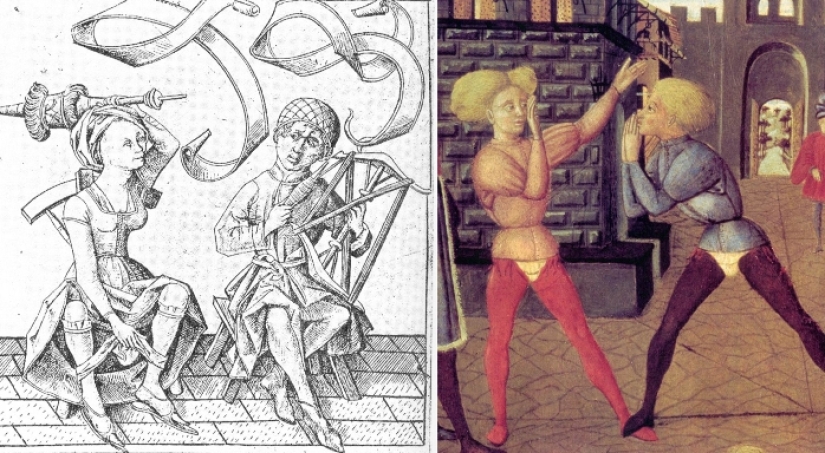
Later, when stockings and trousers were completely separated in men's clothing, stockings continued to be supported with a cross-stitch garter.

It was in this form that the smug Malvolio sported in Shakespeare's Twelfth Night. The poor guy overdid it and tightened the garters too tight…
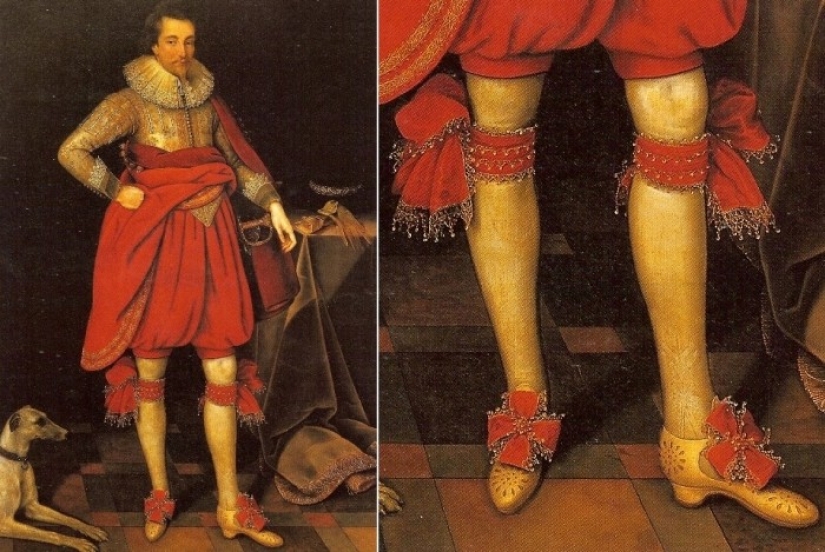
An elegant ribbon, usually silk, was wrapped around the leg, the ends were crossed from behind, and then either from the side or from the front they were tied in a bow. Silk stockings with embroidery, lush garter bows - men flirted even more boldly than women!
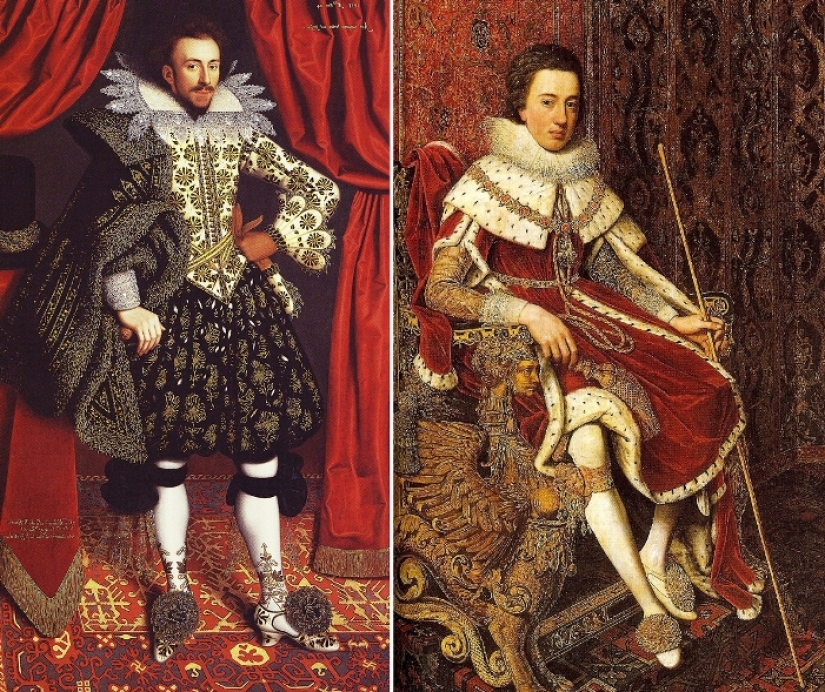
And women also used similar garters, but no one saw them — women's legs were hidden under long and, since the XVI century, very lush skirts. However, why is it "nobody"? Husbands and lovers!
Women's garters over the centuries gradually turned into a fetish, a symbol of victory in love. Carnal love — after all, they were worn around the knee, where the path was ordered by everyone except the chosen ones. It was the men's who were boldly exposed, but the women's were hidden. Stockings on the desired legs could also be seen when moving, for example, in a dance, but to see a garter or even take possession of it ... Only if the lady herself allows it, and this situation will clearly be piquant.
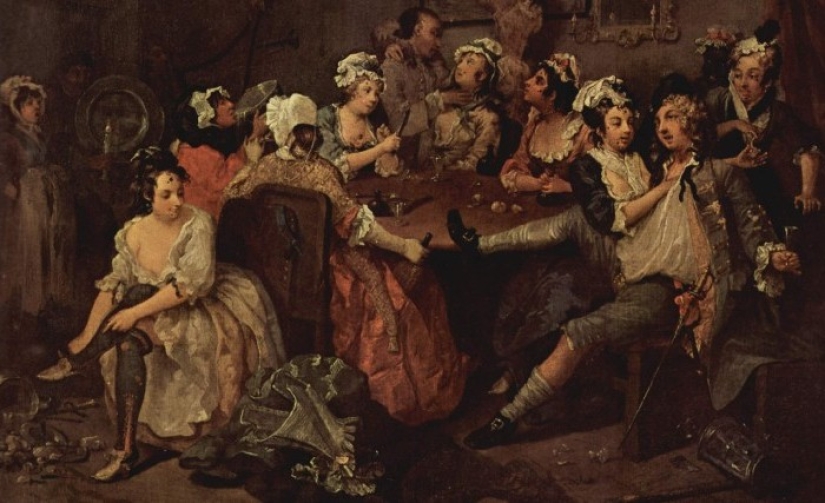
Therefore, it is not surprising that sometimes garters were decorated with embroidery — it could be an elegant drawing (sometimes frank) and an inscription with meaning, encouraging or, conversely, cooling someone's too ardent intentions, demonstrating loyalty or, conversely, frivolity: "Together forever!" or "I will die where I live", "My the heart is busy."
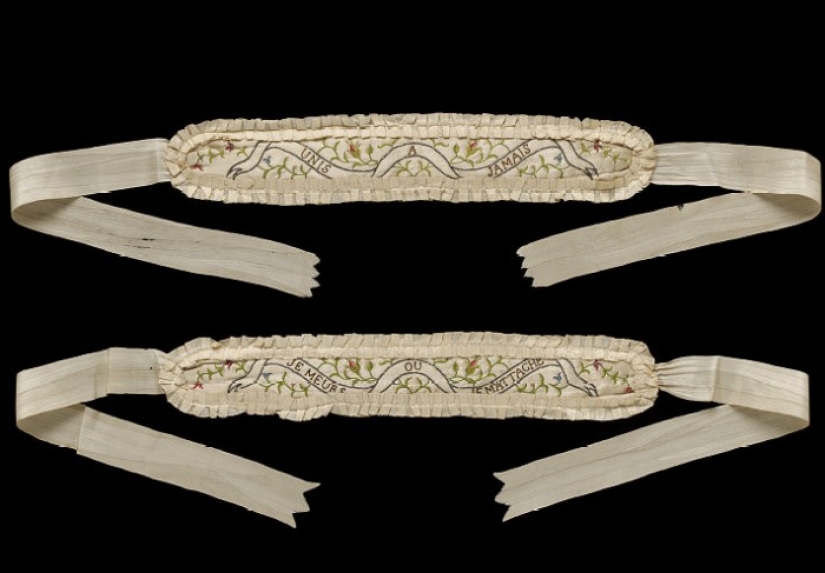
Why, sometimes on the garters, addictions found a place not at all amorous, but political. "Handsome Prince Charlie", a pretender to the British throne, could not take it away from the Hanoverian dynasty and return it to the Stuarts in the middle of the XVIII century, but he had a lot of followers and admirers, as well as fans. "Our prince is a brave man" and "Our cause is right" - who knows, maybe the owners of garters with such inscriptions were in serious trouble at one time, because there was already a smell of high treason… But it must be that only proven people were allowed into the area where such garters were displayed!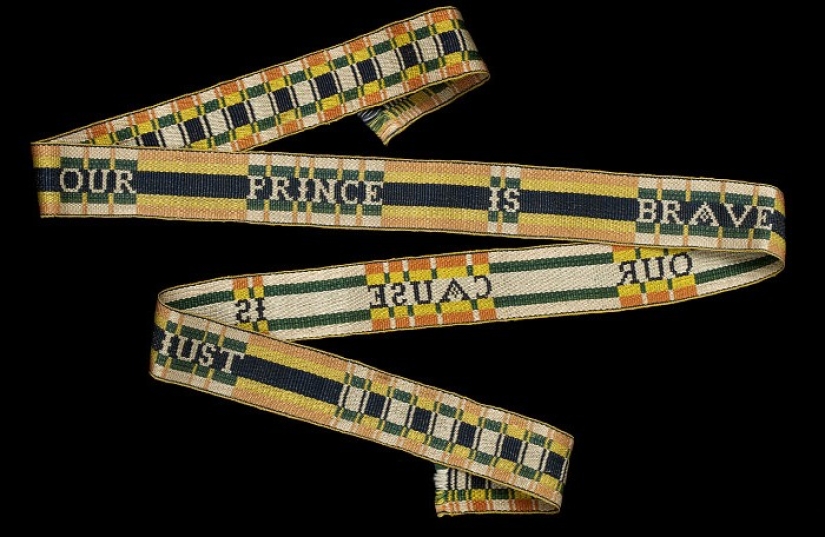
Given the delicate and attractive role of garters, it is not surprising that there are many traditions associated with them. For example, the bride's garter symbolized good luck and, in particular, fertility. And if today unmarried girls at a friend's wedding are waiting for the bride's bouquet, then young people need a much more intimate thing - yes, a garter. This custom has been going on for centuries, and it's good that the bride as a result began to take off the garter herself and throw it into the crowd - otherwise they used to take it off themselves…

The book by Rosemary Hawthorne, a British lady who has been collecting underwear for many years and studying its history, mentions a tradition that existed at the beginning of the XX century in a Scottish village — if the younger sister got married before the older one, then the older one had to be in green garters at the wedding. Any man who, during the wedding games, sometimes very innocent, would have managed to take off these garters, could then marry her. But it was necessary to get married earlier than the nimble younger…
And why is the bride's garter often blue these days? The blue color, the color of the Virgin Mary, symbolizes purity and innocence. Oh, how many famous weddings we can watch on TV, read about them on the Internet or in books! Wedding dresses of brides - actresses, aristocrats and other stars - are considered in the smallest details, as well as their jewelry, bouquets, wedding tiaras, veils, etc. But the press is silent about garters. And correctly. It's too intimate a detail.
But back to the story. So, first the lace, then the ribbon, then…

Still formally a ribbon, but already improved — so that the garter does not cut into the leg, it was made of several layers of fabric and quilted. And by the end of the XVIII century, garters with springs were invented. They were, of course, even more dense, but they sat securely on the leg. So when the Duke of York got married in 1791, newfangled spring garters of bright red color called "The Duchess's Blush" were released in honor of this event. And knitted garters were also offered - softer, even if not as reliable.By the 1830s, "some ladies attach two triangular pieces of elastic fabric to the bottom of the corset, from each of which two ribbons stretch, they are passed through a loop of ribbon attached to stockings, which makes garters superfluous." There is very little left before the well—known belt (or corset, or combination - to your taste) with elastic bands.
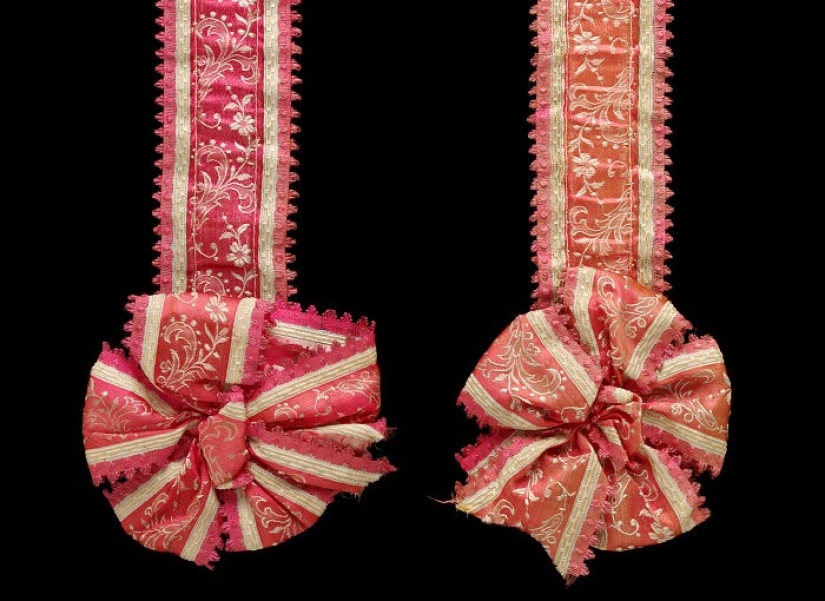
By the middle of the XIX century, people finally conquered capricious rubber, inventing the process of vulcanization of rubber, and there was a "rubber band" in the modern sense of the word. Cotton, linen, and wool were used, artificial dyes invented at the same time were actively used, elastic bands were made not only monophonic, but also patterned — in a word, there was plenty to choose from! And what to sew yourself new garters from. Well, or not to waste time on it, but go to the store and buy them (and at the same time a couple of new stockings). Garters made of woven elastic were advertised not just as comfortable, well-held on the leg, but also as useful — they did not tighten the leg as much and disrupted blood circulation as ordinary garters. Frills, buckles, bows, rosettes made of ribbons — they could still be decorated according to their own taste.
Then, in the 1860s, a Parisian novelty appeared - garters with ribbons that were tied to the lower edge of the corset (as Rosa Bertin, the milliner of the French Queen Marie Antoinette, said, "the new is the well-forgotten old" - let's remember the Middle Ages with their fastening of stockings to the edge of clothes!).
And at the end of the 1870s, corsets were already beginning to appear, in the lower part of which there were special loops, "ears" where you could put an elastic band — this new fashion trend would gain momentum very quickly, displacing the usual garters. It was possible to fasten elastic bands with buttons. It was possible to attach them directly to the corset, or it was possible to attach them to a special belt that was worn over the corset. Well, and the rubber bands themselves? Hidden in cases made of silk or satin, with clips of various shapes, which held stockings (do you want gilded? please!), multicolored or deceptively modest black - for every taste.
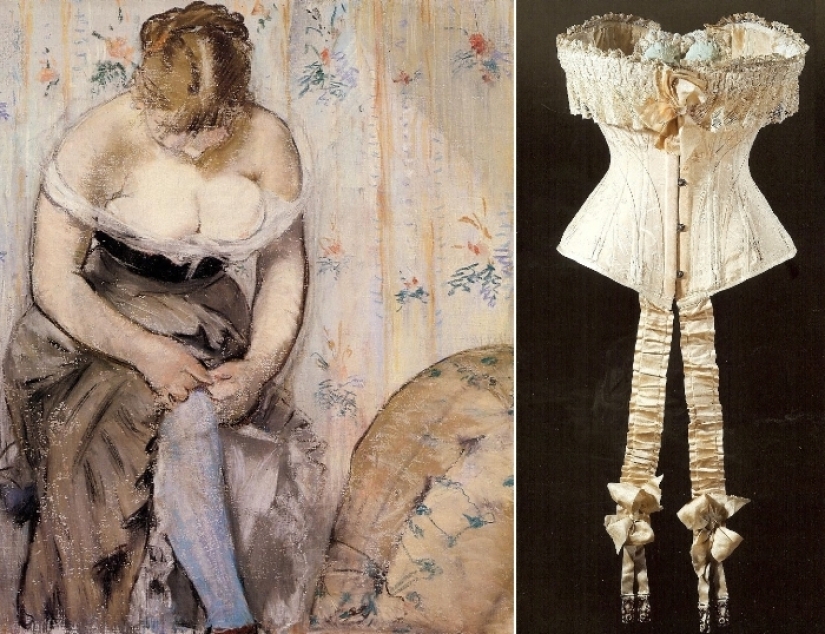
In the 1890s, the beauties from the Moulin Rouge (and not only from there) famously danced the cancan, throwing their legs high — you could see in every detail what was under the skirts. Foam petticoats with lace, pantaloons, black stockings and... black elastic garters. What modesty is there!
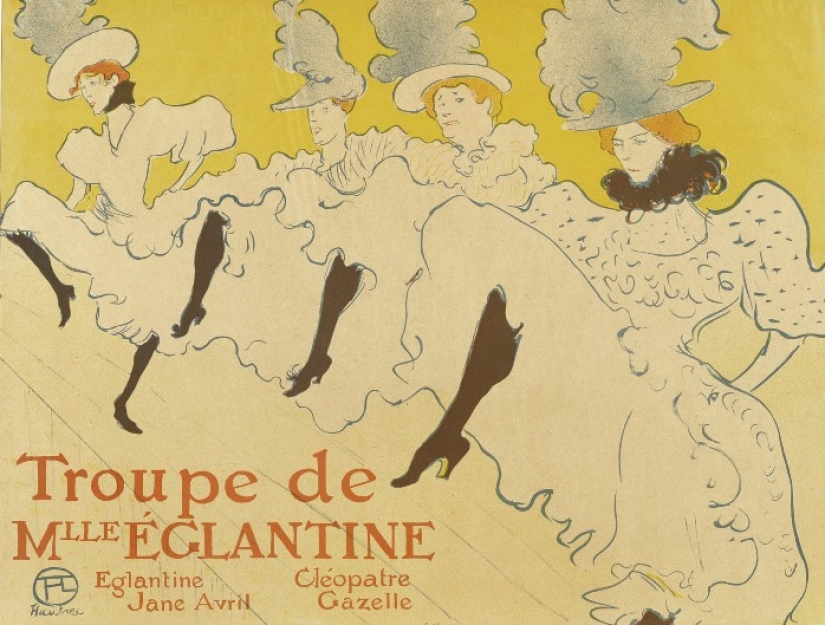
The variety was huge — no wonder the end of the XIX and the beginning of the XX century are called the time of the cult of underwear. A stocking belt could be soft, for example, made of velvet or satin, or it could also be on the bones, like a corset. There could be a lot of buttons on the corset - elastic bands were fastened to stockings, and pantaloons and even a petticoat were fastened to the rest of the buttons, so that underwear, including stockings, turned into a single structure - but nothing moved anywhere. Elastic bands could make up one whole with the corset, or they could be detachable. Elastic bands could be released from under the pantaloons, or they could be passed into specially made slots on the pantaloons. Why is this the case? So that the metal clip does not come into contact with the delicate skin and does not rub it.
Well, and the garter that covered the leg? It will also exist. When skirts were shortened in the 1910s, garters were often attached under the knee and made them particularly elegant, even matching in color with the rest of the costume - what if this place flashes when walking or dancing?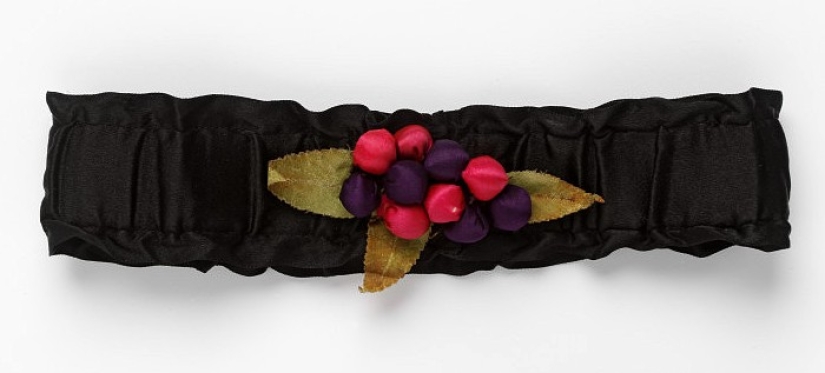
And when in the 1920s women's dresses were sharply shortened, and dancing began to require sudden movements (for example, Charleston), then in the section of a high-flying dress, seductive elegant elastic bands could also quite flash…
Elastic wide belts for stockings and graces of the 1950s played the role of the former corsets — they made the figure slim (well, at least for a while!), and supported stockings.
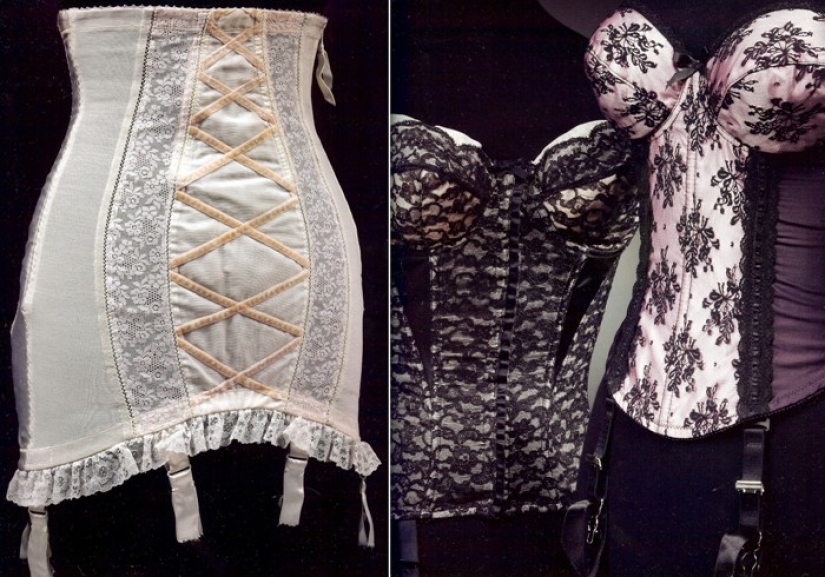
But the time has passed for fluffy skirts that hid designs of frills, bones and lace under them, and such belts were sent to the shelf in the closet or thrown away — they were replaced by simple lines of the 60s, and at the same time tight-fitting belts with lycra. And the 70s brought tights with them, at the same time urging women to abandon all these methods of seducing men - an attempt to make the waist thinner, more seductive ... Down with corsets, belts, stockings, garters and elastic bands! Down with it! Long live freedom!
So what have we achieved? Freedom, yes. And at the same time, the fact that stockings, which are held by a belt with elastic bands or garters, have not disappeared, but have acquired a special charm, the charm of the past. A seductive past. When a woman in the morning did not put on jeans and socks or tights and a miniskirt, but slowly and carefully pulled on thin stockings, and then either fastened them to an elegant belt with satin elastic bands, or put on garters - lace, embroidery, bows, frills ... Underwear is not for a trolley bus, but for a limousine. And even better — carriages. Romance, luxury, slowness, bliss. What we so often lack today.
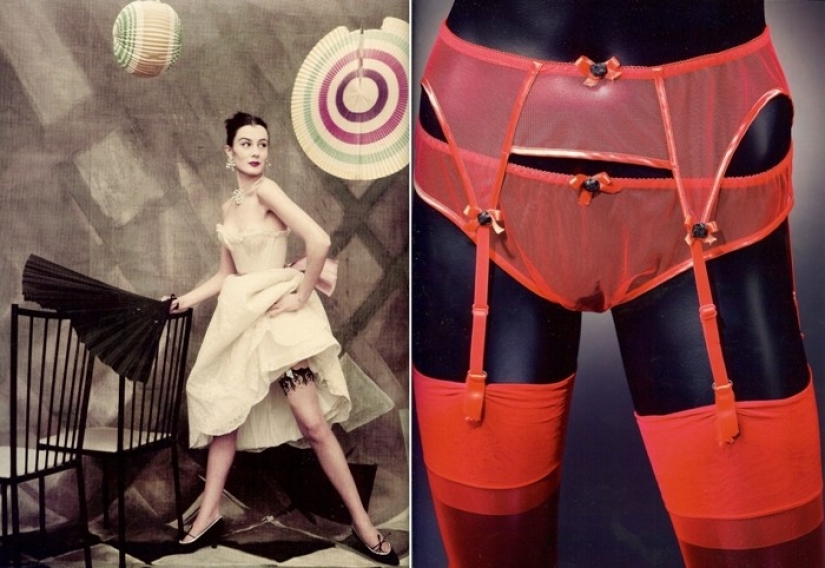
In a word, leave tights to weekdays. And when you want to please yourself (and at the same time — what can I hide - and the one you allow to admire the strip of skin over the edge of stockings and panties), get garters out of the drawer. Or a belt. And even if it's not as comfortable as tights, but it's so... flirty! We are all a little bit flirty. At least sometimes.
Keywords: Underwear | Clothes | The Middle Ages
Post News ArticleRecent articles

See what uninhibited ladies looked like at the height of the American baby boom. In those days, there was no trace of silicone, and ...

We offer you a selection of interesting facts from a variety of fields of knowledge. How does our body react to sneezing? Where did ...
Related articles

Leonardo da Vinci was accused of being fond of orgies. William the Conqueror, despite all his successes, was called a "Bastard" ...

Fans of actress Monica Bellucci do not associate her style of clothing with black dresses in vain. A famous Italian woman has ...

Many writers, including Nikolai Gogol in his immortal «Taras Bulba» mentioned that Sich women were not allowed. There is ...

Imagine a forest where hundreds of pine trees seem to bow to an invisible force and remain frozen in this strange obeisance ...